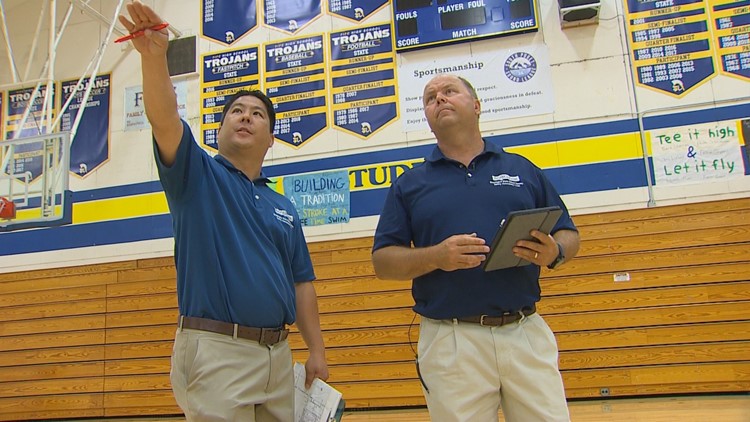Structural engineers specializing in seismic vulnerabilities are fanning out across Washington state looking at 220 school buildings over the summer of 2018.
It’s all part of the $1.2 million in funding from the legislature to begin the huge task of assessing not only the school buildings, but also their relative seismic risk:
- Are the buildings on soil that would liquefy during an earthquake?
- How close is the schools to a fault?
- Are the schools in a region vulnerable to a magnitude 9 earthquake, as would happen on the Washington coast, and are those schools in a tsunami zone?
Civil engineering firm Reid Middleton is handling the school inspections which look at everything from the foundation to connections between the walls, floors, and roof of the building. Even mechanical equipment like air conditioners and gymnasium scoreboards are evaluated for their vulnerability to falling, even if the building itself does not lose its structural integrity.
On the ground outside, geophysicists with the Washington Geological Survey, part of the Department of Natural Resources, evaluate the ground supporting the schools. On sandy and loose soils, shaking from the earthquake could last longer than on ground that’s rockier or more tightly packed.
While the first $1.2 million will look at 220 school buildings, there are thousands more than need studying. According to estimates from DNR and the Office of the Superintendent of Public Instruction (OSPI), there are 4,000 buildings that need assessment in total. Seventy percent of the schools are in areas considered at high seismic risk, while 200 schools are in zones considered at high risk for liquefaction.
Commissioner of Public Lands Hilary Franz says her department will increase the request in the next biennium to $5 million to try and evaluate up to 1,000 schools every two years. The money does not include structural work on any of the schools.
The first round of field assessments will be analyzed and put into a final report in 2019. That information is passed to OSPI at the state level and school boards at the local level, to try and figure out their next steps.
Those steps could include building replacement for the most vulnerable structures, earthquake retrofits, and bracing to make older and more vulnerable structures more earthquake-resistant. Some of the work may be minimal and low cost.



